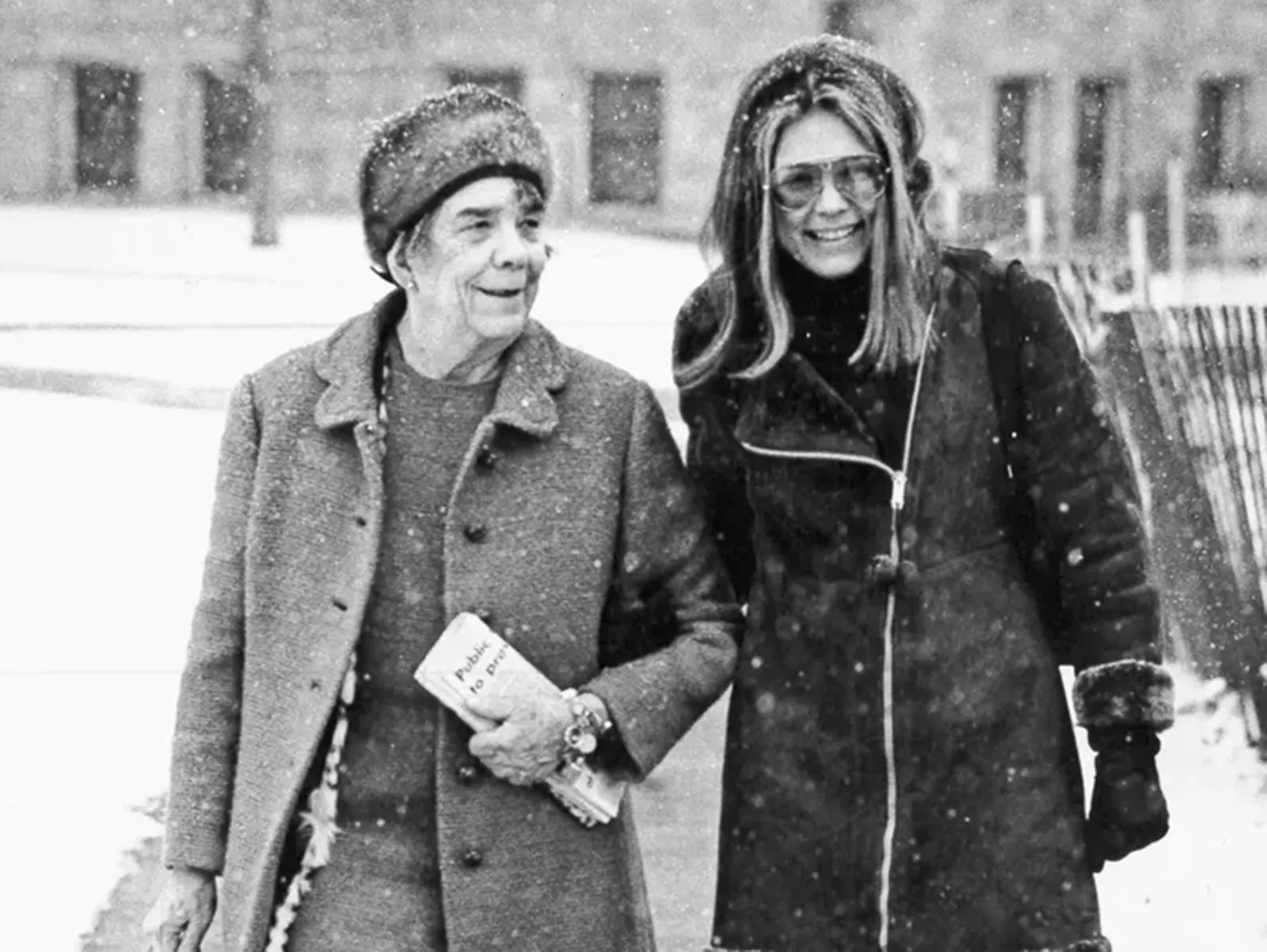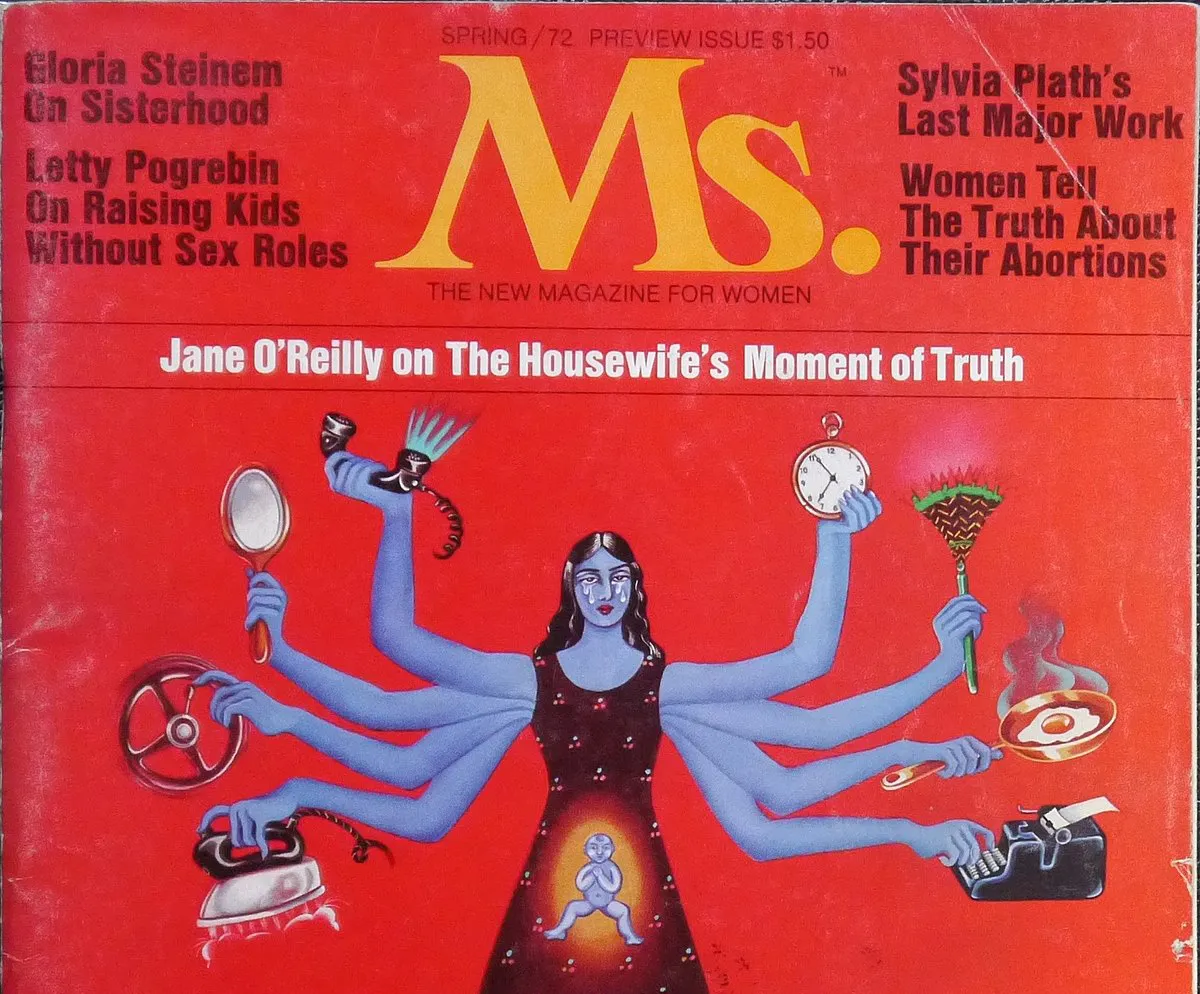Gloria Steinem: The True Superhero of Feminist Journalism
In a remarkable career spanning more than 70 years, Gloria Steinem has gone from teenage tap-dancer to veteran investigative journalist and managed to combine the seemingly contradictory roles of leading feminist thinker, infamous Playboy Bunny, and the boss of a CIA front organization along the way. She’s now approaching her nineties and continues to lead the way for women as both a journalist and feminist, an inspirational figure and True Superhero with an amazing life story.

From teenage tap-dancer to CIA operative
Gloria was born in 1934 in Ohio; her father was a traveling antiques salesman who also owned a beach resort in Michigan. The family lived in a trailer and traveled frequently, living in Michigan in the summer months, then visiting a new town each winter to sell more antiques. Gloria’s mother, Ruth, had been a successful journalist herself before Gloria was born, but her attempts to juggle her career alongside her role as a housewife proved too much to manage, and eventually led to severe depression and hallucinatory episodes. Gloria’s parents divorced in 1945 and Gloria moved with her mother to Toledo where she was forced to act as housekeeper, breadwinner, and caregiver for her mother. From her early teens onward, Gloria worked at local nightclubs where she would tap dance for $10 a night, and by the age of 16 she graduated to working in retail after school and at weekends. Finally, aged 17, her father was persuaded to pay for Ruth’s care while Gloria went to live with her older sister in Washington, D.C.
"The brand new social experience where you activate your gaming skills as you train like a spy."
- TimeOut
Take on thrilling, high-energy espionage challenges across different game zones.

Gloria’s life changed enormously in Washington, and largely for the better. She volunteered at the campaign offices of Adlai Stevenson in the run-up to his 1952 presidential campaign and, although she thrived in the environment, she was shocked by the racial and social segregation in Washington. Only white men were on the payroll, and when Stevenson visited the offices all women “younger than his mother” were required to hide away from sight in an upstairs office for fear of sparking scandal among the press. She was also quickly beginning to understand the sexual dynamics of the workplace, later describing “the male staffers who rated our looks and brushed against us in close quarters. Our presence was the problem; their behavior was inevitable”.
After Stevenson’s bid for the White House faltered she moved on, graduating from Smith College before spending two years in India. She returned in 1958 and took a job leading an organization called the Independent Research Service, a CIA front organization tasked with recruiting American students to attend - and disrupt - international student events organized by the Soviet Union such as the 1959 World Youth Festival in Vienna. These events were part of an ongoing battle between the Cold War superpowers to promote their ideologies to students on the world stage. In later years, Steinem would be pilloried by many of her feminist peers for her time working with the CIA but she has never expressed regret saying, “In my experience, the Agency was completely different from its image; it was liberal, nonviolent, and honorable… If I had a choice I would do it again.”
A Bunny’s Tale
By 1960, Gloria was looking for a change and moved to New York to pursue a career as a writer and journalist, following in her mother’s footsteps. She struggled to secure assignments outside of those traditionally given to women journalists but nonetheless was able to have some important work published; her first major assignment for Esquire magazine in 1962 focused on the developing world of contraception and what this meant for women who had previously been forced to choose between a career and a family, in an echo of the difficult choices her own mother had been forced into. Her next major investigation the following year propelled her into the national consciousness, as she went undercover to expose another new development in the rapidly shifting climate of the early 1960s, the Playboy Club.

The first Playboy Club had been opened by Hugh Hefner in Chicago in 1960, offering overpriced drinks and meals to men served by young women - ‘Playboy Bunnies’ - in punishingly tight Bunny costumes, complete with a cotton tail and rabbit ears. The men were tempted by the possibility of encountering a ‘Playmate’ - one of the models who appeared as centerfolds in Hefner’s Playboy magazine, but all of the staff were handpicked for youth and beauty. When the club began to be franchised and opened a hugely popular New York branch in 1962, Gloria saw an opportunity for a story and applied to be a Bunny using a pseudonym of Marie Ochs.
Her resulting article, A Bunny’s Tale, published in 1963 exposed a number of illegal practices within the New York Playboy Club ranging from code violations involving alcohol to unofficially sanctioned prostitution. Perhaps the most shocking revelation was that all of the girls who worked in the club were required to undergo gynecological examinations and testing for STDs. While the club operated a strict ‘no touching’ rule for patrons, and Bunnies were told they were not allowed to date customers, these rules were waived for Number One Keyholders, who were typically high-ranking local officials and members of the press. There was also nothing to prevent ordinary paying customers from propositioning the Bunnies, who were earning minimum wage and routinely had wages docked and tips confiscated. Gloria documented how she was groped, propositioned, and insulted while undergoing extreme physical pain as a result of the mandatory “two sizes too small” outfits, “so tight they’d give a man a cleavage” and long shifts without breaks, serving drinks on three-inch heels.
Moving beyond Bunnyhood
While undercover, “Marie” only feared her cover would be blown on one occasion, when she served a New York television director and his wife. Other journalists had previously tried to infiltrate the organization but were discovered and, as Gloria knew the director socially, she was terrified that her investigation was about to end but when she took his coat he simply looked straight through her. She wrote of how “it was depressing to be a nonperson in a Bunny suit but also a victory”, as she grew more confident in her undercover role.

Once the article had been published and brought her national attention, she faced the opposite problem. Despite her newfound fame it became even harder to find work than when she was starting out. Editors saw her as a Bunny, not a journalist, and dismissed her article pitches. Meanwhile, the Playboy organization was very aware of who she was and, while Hugh Hefner personally contacted her to tell her that he had stopped the STD checks on the Bunnies, she also received “several weeks of obscene and threatening phone calls from a man with great internal knowledge of the Playboy Club”. She was named as a co-defendant in a $1m libel case brought against a different magazine that she had no connection with, who eventually settled out of court. Also, as she had signed away rights to her image while working at the club, Playboy magazine printed photographs of her in their Bunny costumes for the next 20 years.
From Miss to Ms.
These petty reprisals only served to reinforce Gloria’s resolve. As she later wrote, one of the consequences of her ordeal was “the realization that all women are Bunnies”, and although she initially regretted the publication of the article, this quickly changed after she discovered the burgeoning feminist movement that she would soon help lead. Gloria eventually found a way to circumvent the male-dominated world of journalism when she helped found New York magazine in 1968, and then Ms., the first national American feminist magazine, in 1971. Both organs were successful, and Ms. in particular was received with huge enthusiasm by the public. Gloria had successfully created an environment for women journalists and feminist publishing, a tremendous achievement and one that brought a great deal of pride and pleasure to her mother, who would accompany her daughter as she traveled the world giving speeches and campaigning for women’s rights.

Gloria did not rest on her laurels, nor did she abandon investigative journalism. In the 60 years since she went undercover at the Playboy Club, she has not only led the development of the feminist movement as an activist, thinker and writer, but also continued to pursue award-winning journalism. Her extraordinary list of achievements includes an Emmy award for her 1993 HBO documentary on child abuse Multiple Personalities: The Search for Deadly Memories, and, in 2016 - aged 82 - she was nominated for another Emmy for her documentary series Woman with Gloria Steinem, which covered subjects ranging from the use of rape as a military tactic in the Democratic Republic of Congo to the plight of mothers in US jails. She’s also continued her work as an activist, participating in the 2015 peace protest in the Demilitarized Zone between North and South Korea. To this day, she continues to speak out on feminist issues, a True Superhero who helped begin the fight for women’s equality, and shows no signs of stopping.
SPYSCAPE+

Join now to get True Spies episodes early and ad-free every week, plus subscriber-only Debriefs and Q&As to bring you closer to your favorite spies and stories from the show. You’ll also get our exclusive series The Razumov Files and The Great James Bond Car Robbery!


Gadgets & Gifts
Explore a world of secrets together. Navigate through interactive exhibits and missions to discover your spy roles.
Your Spy Skills
We all have valuable spy skills - your mission is to discover yours. See if you have what it takes to be a secret agent, with our authentic spy skills evaluation* developed by a former Head of Training at British Intelligence. It's FREE so share & compare with friends now!
* Find more information about the scientific methods behind the evaluation here.


Stay Connected
Follow us for the latest
TIKTOK
INSTAGRAM
X
FACEBOOK
YOUTUBE